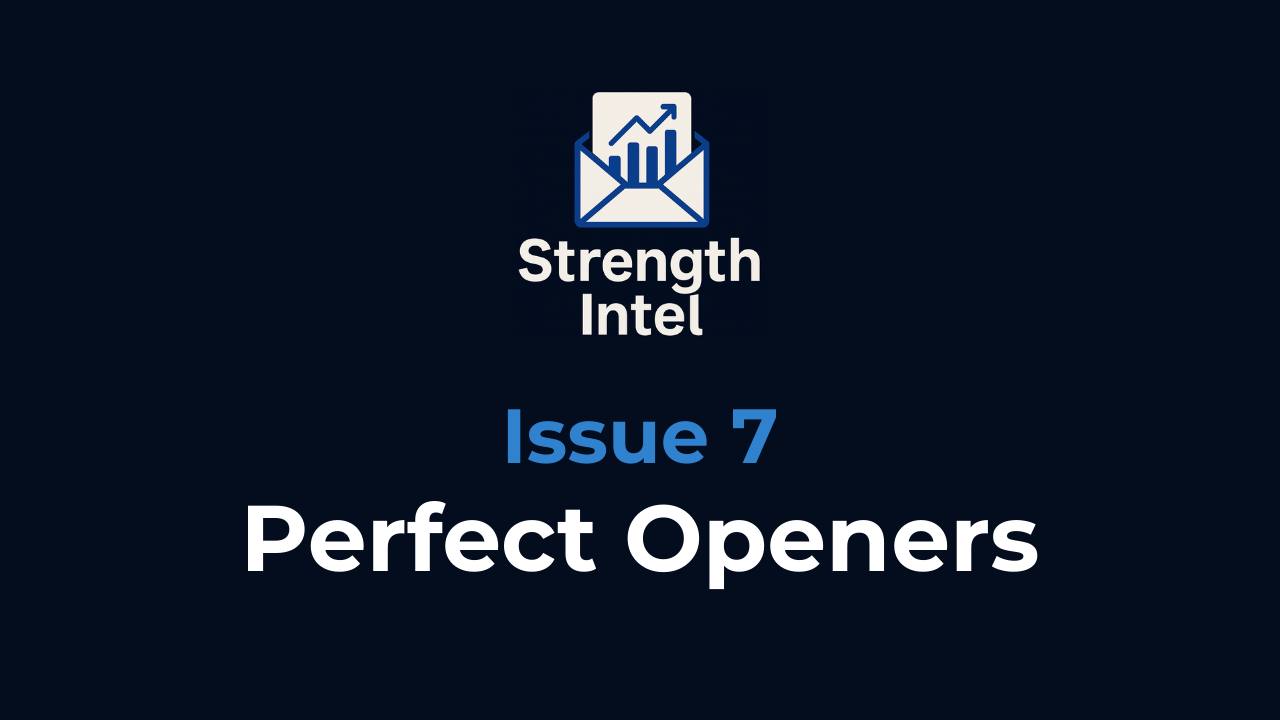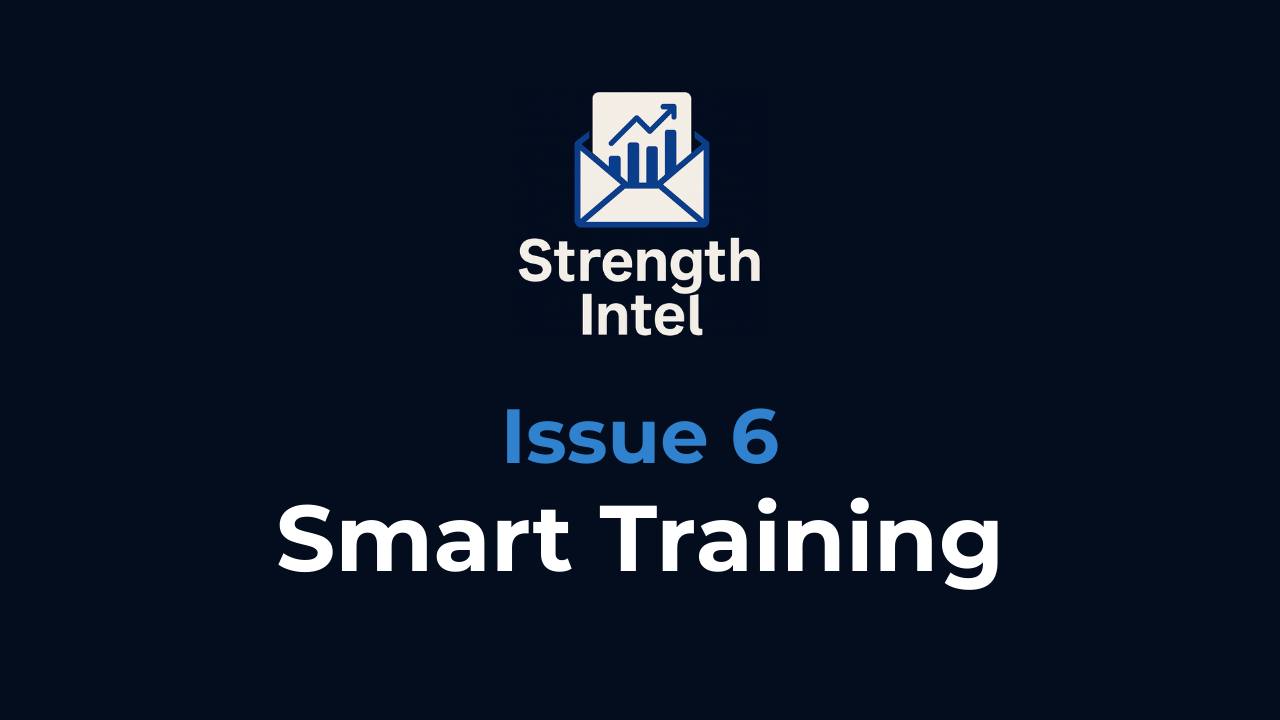Strength Intel - Issue 4
The Explore/Exploit Dilemma
There's a peculiar paradox that haunts every serious lifter's training journey. Stick with what's working, and you might be leaving strength gains on the table. Chase every new method that promises better results, and you risk losing all the progress you've carefully built.
Welcome to the explore/exploit tradeoff—a fundamental decision-making framework that has profound implications for how we approach strength training.
A Menu of Training Options
Every time you look at a menu, you have a decision to make. Should you choose a meal you’ve eaten before and enjoyed (exploit), or should you choose something completely new that might be even better (explore)?
Too much exploitation, and you'll eat the same food forever. Too much exploration, and you risk wasting time and money on disappointing meals.
Your training decisions follow the same logic precisely. That program that added 15kg to your squat over 12 weeks? It's your "reliable food choice". But what if there's something better out there—a different exercise variation, training frequency, or periodisation model that could unlock another 20kg?
The question becomes: when is it worth abandoning what you’re doing now to chase what might work better?
Building Your Exploration Strategy
Isolation Testing: When exploring new methods, test them on secondary exercises first. If this new method sends your Paused Squats through the roof, then give it a go on your main Squats. If it doesn’t, you haven't compromised your main lift.
Parallel Tracking: Run new methods alongside established ones for 4-6 weeks. Keep your Bench Press on the standard protocol and switch your Deadlift to a new one. If you use an objective measure, such as velocity, then the data will indicate whether those 6 weeks have led to greater gains.
Rollback Planning: Before implementing any new method, establish clear criteria for abandoning it and returning to your previous approach. Here are some examples you could use (remember the benefits of objective metrics).
-
Objective - If velocity drops by more than 0.05 m/s over two consecutive weeks
-
Objective - If my AMRAP numbers drop on a set load after 4 weeks
-
Subjective - If the same weight feels harder on 2 straight weeks
If any of these training tripwires are triggered, then you can revert to your previous training protocols.
Measuring Exploration Success
Assuming no tripwires have been triggered, how do we decide on the success of these new strategies? Well, try not to get caught up in how the training feels; instead, look for objective markers (velocity changes) and then reinforce these with subjective scores (RPE and RIR).
Short-term markers (2-4 weeks):
-
Velocity maintenance under consistent loads
-
Subjective recovery and session quality
Medium-term validation (6-8 weeks):
-
Measurable strength gains on primary lifts
-
Sustained velocity improvements
Long-term assessment (12+ weeks):
-
Improved velocity at percentage-based loads
-
Enhanced technical proficiency under maximal loads
The Psychology of Smart Experimentation
The explore/exploit dilemma isn't just about programming—it's about managing the psychological tension between security and growth.
Avoiding Analysis Paralysis
Too many options can be paralysing. Limit yourself to testing one new variable at a time, and commit to that test for a minimum duration. Use objective data to guide the decision.
The Sunk Cost Trap
Just because you've invested six weeks in a new approach doesn't mean you should continue if the data shows it's inferior. Your previous investment is gone—the only question is what will serve you best moving forward.
Consistency as a Skill
Remember that the ability to stick with effective methods is a valuable skill in its own right. The most successful lifters aren't those who constantly chase novelty, but those who can identify when something is working and resist the urge to fix what isn't broken.
The Bottom Line
The explore/exploit dilemma in strength training is about making informed decisions based on objective data rather than subjective feelings.
Your velocity readings, technical execution scores, and systematic progress tracking provide the clarity needed to navigate this fundamental tension. When the data shows genuine adaptation, exploit ruthlessly. When progress stagnates despite adequate recovery, explore systematically.
Trust the numbers, respect the process, and remember that the best program is the one that consistently produces results over time—even if it's not the most exciting one on social media.
Most importantly: every exploration should teach you something valuable, whether it succeeds or fails. The goal isn't to avoid all mistakes, but to learn from them quickly and move on to what works.
NEW: Free Training Warm-Up Calculator
Struggling with warm-up progressions for your lifts (or those of your clients)? Our new calculator utilises data from over 200 world-class powerlifters to generate the optimal warm-up sequence for the Bench Press, Squat, and Deadlift. Simply enter your working weight and reps – no more guesswork, no more burning out before your main sets.
Perfect for all coaches and lifters involved in strength training. Completely free, no strings attached.
Ready to warm up like the pros?





